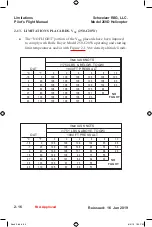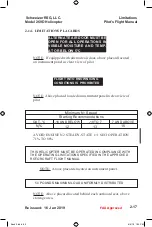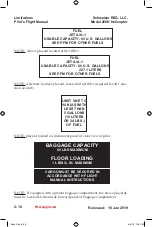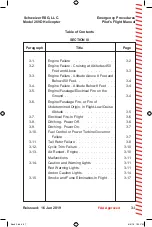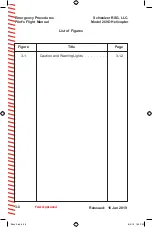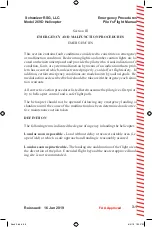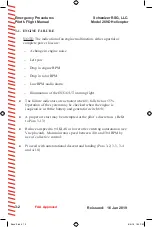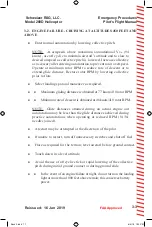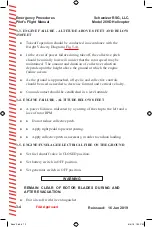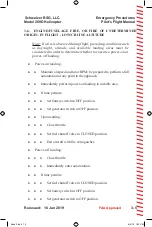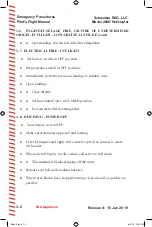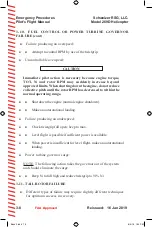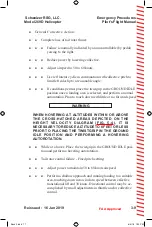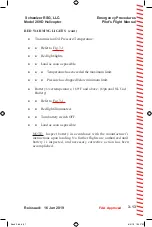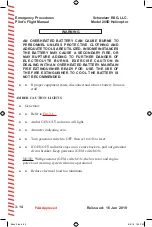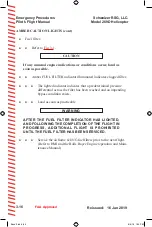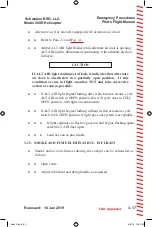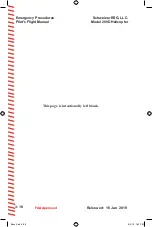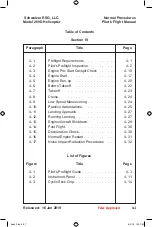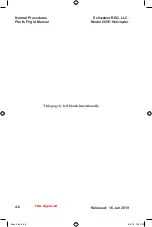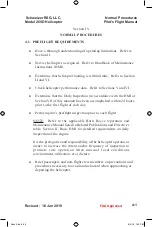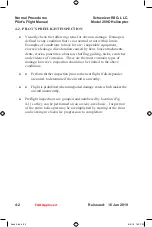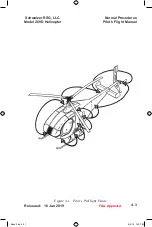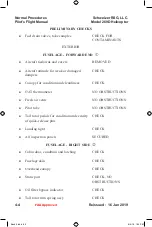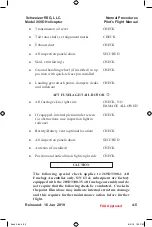
3-12. CYCLIC TRIM FAILURE
Failure is indicated by an inability to reduce cyclic forces with cyclic
trim switch. Failure may be either a frozen or uncontrollable
runaway of the trim actuator in either the longitudinal or lateral
direction. Runaway to full travel can produce stick forces of
approximately 10 pounds in the direction of the runaway.
Avoid rapid and/or abrupt maneuvers.
Establish flight conditions that produce the least cyclic control force.
Land as soon as practicable.
3-13. AIR RESTART - ENGINE
CAUTION
Do not attempt restart if malfunction is suspected.
At low altitude or where time is critical:
Twistgrip in CUTOFF position.
Immediately actuate starter.
NOTE: Depressing the starter button actuates the igniter. If N
1
is
18% or above, open twistgrip immediately to GROUND IDLE. N
1
speeds of 25 to 40% are preferred for coolest and fastest relights.
Maintain safe autorotational airspeed.
When altitude and time permit:
Proceed with normal engine start, if N
1
has decayed below 18%. Re-
fer to Section IV, Engine Starting.
Recommended airspeed is approximately 60 KIAS.
Recommended pressure altitude is 10,000 feet or below.
Set generator switch and all engine bleeds (heater, filter bleed and
anti-ice) OFF.
Emergency Procedures
Pilot's Flight Manual
Schweizer RSG, LLC.
Model
269D
Helicopter
3-10
Reissued:
16
Jan 2019
//
//
//
//
//
//
//
//
//
//
//
//
//
//
//
//
//
//
//
//
//
//
//
//
//
//
//
FAA Approved
Book 3.indd 78
8/4/19 1:25 PM

